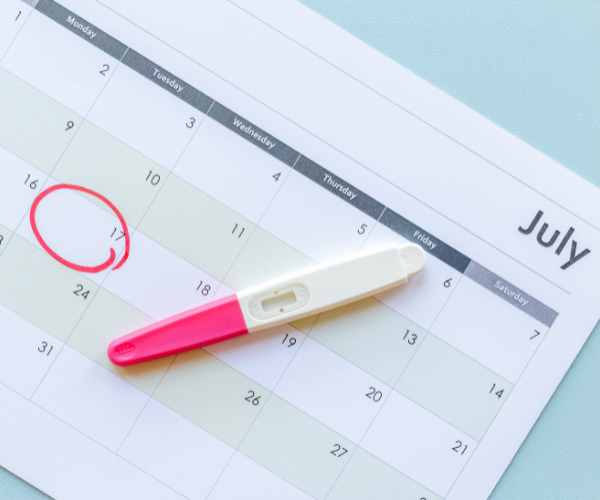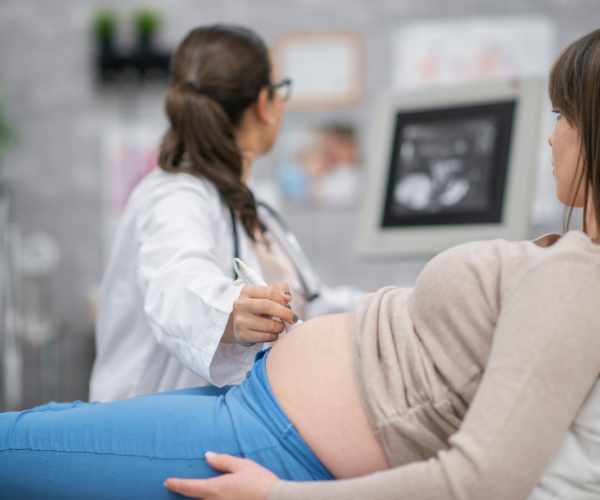The third trimester of pregnancy is a truly exciting period of the development of the future baby and changes in the mother’s body. If you are at the last trimester of your pregnancy, knowing the different pregnancy milestones and what to anticipate may help you in these last few weeks of this life-changing process. The body, mind, and baby go through many changes in these weeks and understanding these changes will equip you to welcome your baby when he or she comes.
You will have an emotional and physical journey, from feeling the baby moving to getting new symptoms that you did not expect. Numerous women said that they are excited and stressed at the same time as they go through these changes in their physical and psychological states. having some idea of what to expect does go a long way in relieving some of this stress and tension so that you can concentrate on welcoming your baby.
This guide will give a day by day account of the main changes in the last three months of pregnancy and how to deal with some of the most frequent discomforts like heartburn and Braxton Hicks contractions. Enjoy it, each step you make leads you to the wonderful experience of delivery and holding the precious gift of life.

Your Body and Baby in the Third Trimester:
The following are the key physical milestones, and the symptoms that go with them.
Weeks 28–32: The Home Stretch Begins
During weeks 28 to 32, significant developmental milestones occur for both you and your baby:
- Baby’s Organ Development: At the end of 28 weeks, your baby’s lungs and other organs are nearly fully developed in order for your baby to survive outside the womb. The lungs make surfactant which is a substance that stops the air sacs in the lungs from collapsing after birth. At this time, in week 32 of pregnancy, the baby has grown significantly, it starts to gain weight, primarily fat and muscle mass in order to adapt for life after birth.
- Common Symptoms: They also get very tired, have heartburn, and may experience constipation during this stage of pregnancy. About 50 to 70 percent of women are likely to develop heartburn, this can be as a result of hormonal changes and the enlarged uterus applying pressure to the stomach. Because the baby becomes more active, you may be able to feel the baby movers more as the baby develops and practices kicking and stretching.
- Physical Discomforts: Some women may have round ligament pain, a sharp or snapping pain in the lower abdomen that may occur when one stands up or makes a sudden movement. This is because your body takes time to adjust to the new weight gain and the changes happening to the uterus. According to the study, one in every four expectant mothers suffers from this condition in the third trimester.
- Prenatal Care: It is recommended to attend your healthcare provider’s appointments at least once a month in order to keep track of both your and your baby’s health. These follow-up appointments help your provider monitor your child’s progress, control symptoms, and discuss any issues with you. It’s recommended to have an appointment every two weeks in the final weeks of your pregnancy.
Weeks 33–36: Preparing for Arrival
As you transition into weeks 33 to 36, your body prepares for the impending birth:
- Bone and Brain Development: This is an important stage as far as your baby’s bone density and brain development are concerned. At this stage, the babies bones are also starting to harden and the brain is still developing fast, creating important neural pathways. Some research has estimated that the neural development is about 90% complete by week 36 meaning other functions that are cognitive in nature have to be done after the baby is born.
- Shifting Baby Position: The baby may move to a different part of the womb as they descend into your pelvis for birth. This involvement sometimes reduces some stress on the diaphragm and thereby facilitate breathing. Although, it can cause pressure on the bladder and therefore lead to frequent urination.
- Braxton Hicks Contractions: The common side effect that many women experience is an increase in so called Braxton Hicks contractions. These irregular contractions can start as early as the second trimester but they tend to become more frequent as your body gets ready for labor. These help in purely the contraction of the muscles of the uterus and can take from 30 seconds to two minutes.
- Tracking Changes: It is very useful to use a pregnancy tracker app. Some of the apps will enable you to record signs of the disease such as backache, tenderness of the breast, and frequent urination to help you monitor progress and share with your healthcare provider.
- Myth Busting: It is fairly normal to find women who are pregnant to have some issues with stretch marks. It is impossible to completely get rid of them, but drinking water and using creams for hydration can help the skin not to itch and the vessels to be less noticeable.
Weeks 37–40: Full Term and Ready for Birth
The last three weeks of pregnancy, weeks 37 to 40, mean that you are in your third trimester.
- Mature Organs: At this time, all of your baby’s organs, including the lungs, are fully formed and functional and he or she is ready to live outside the womb. The current finding indicates that by week 37, 98% of the infants are in good condition to be born and only a few may need special care.
- Frequent Contractions: There are likely to be more contractions as your body gets ready for labor. Most women have some Braxton Hicks contractions and true labor contractions at some point, and the latter can become stronger and more frequent. It has been estimated that 60% of women will have some form of contractions before actually going into labour.
- Understanding Your Due Date: The fact of the matter is that, out of every 100 babies, only 5 are born on the expected due date. Even though your due date calculator will give you a particular date, there are many reasons why a woman could go into labor.
- Final Prenatal Visits: The final months of pregnancy are a time for the final baby check and assessment as to whether you will need to be induced or not. It is very important to be honest with your healthcare provider regarding any symptoms which may present themselves or worries that one may have in this time.
Teaching stress management and strengthening psychological, emotional, and spiritual wellbeing
The prevention of complications is achievable through; seeing the doctor for prenatal checkups, taking balanced diet, drinking water and taking moderate exercise like walking or prenatal yoga.
What Medications and Treatments Are Okay to Take During This Time?
For example, some of the most typical complaints, like constipation, heartburn, and backache, may be managed by altering one’s diet, using home remedies, or taking prescription or over the counter drugs. Please always consult your doctor before trying anything that is recommended here or anywhere else for that matter when pregnant.
Other drugs that are usually advised for use during pregnancy include antacid for treating heartburn, and gentle laxatives that do not harm the baby when taken under the supervision of a doctor.
Table of Concern: What to Monitor Week by Week
| Week | Key Milestone | Symptoms to Monitor | Tips and Self-Care |
|---|---|---|---|
| 28–32 | Increased Baby Movements | Fatigue, heartburn | Practice light workouts, stay hydrated, and prioritize getting enough sleep. |
| 33–36 | Braxton Hicks, Baby Drops | Back pain, leg cramps | Use belly support, stretch gently to alleviate pain, and maintain good posture. |
| 37–40 | Full Term, Labor Signs | Frequent urination, pain | Prepare for labor, rest as much as possible, and consult your healthcare provider. |
All of these components are important in the third trimester of pregnancy. Learning about your body and your mind will help you to face this beautiful process of becoming a mother with confidence.
FAQ:
What are Some Things to Expect in the Third Trimester?
Key milestones during the third trimester include:
- Reaching Full-Term: The term pregnancy is considered as the full term if it reaches 37 weeks of gestation. At this time, all of your baby’s organs are developed, and he or she is prepared for life after birth.
- Baby’s Brain Development: Some of the most important brain development takes place in the third trimester, the neurons begin to connect at a fast pace. Research suggests that in the thirty fourth week, the baby’s brain is ninety percent the size of an adult brain. This growth is vital in the cognitive development and sensory of the baby shortly after birth.
- Monitoring Symptoms: Some of the signs include contractions and having to pass urine frequently. Braxton Hicks contractions may happen at any time before the onset of labor. Frequent urination is due to the pressure on the bladder when the baby develops. Documenting these changes in your symptom diary will be particularly helpful for your clinician during your next visit.
I have some general discomforts such as backache and swelling how can I contain them?
Managing common discomforts like back pain and swelling requires proactive strategies:
Rest: It is important to take time and rest especially if one is tired or in pain. To this end, it is important to try to make the area where you are going to sleep comfortable so that you can relax.
Hydration: These symptoms can be minimized by drinking a lot of water to flush out excess sodium and fluids out of the body. Drinking water should not be less than 8-10 glasses of water in a day unless recommended by your doctor.
Compression Stockings: Using medical compression stockings can help to improve blood flow in your legs, and minimize swelling. A retrospective study done in the American Journal of Obstetrics and Gynecology showed that compression reduced swelling in 67% of the pregnant women who developed leg swelling.
Is it okay to have Braxton Hicks contractions?
Yes, Braxton Hicks contractions are NORMAL and are the body’s way of getting your body ready for labor. Also known as practice contractions, they usually begin at the twentieth week of the pregnancy and increase in frequency towards the end of the pregnancy. These contractions can be eased with:
Rest: To some extent, it is possible to reduce discomfort by finding time to rest.
Hydration: Helping to manage the contractions is to drink water since this can help to lessen the frequency and strength of contractions.
Research has established that it is crucial for women to understand the difference between Braxton Hicks and true labor contractions in the last few weeks of the pregnancy. Real labor contractions do not cease and they also become frequent and stronger with time.
What Changes in the Emotions Should I Look for During the Third Trimester?
The third trimester is a period when expectant mothers have emotional swings commonly. Other common reason include mood swings due to hormonal changes, dizziness, and feeling of tiredness and the impending birth. Strategies to manage these emotional fluctuations include:
Journaling: This can help you destress, as well as to express emotions such as anxiety or excitement that you may be experiencing.
Breathing Exercises: Taking some time out to do some deep breathing could help sooth the mind and the body. The literature review shows that mindfulness-based practices can help to alleviate stress and enhance the quality of emotional experience.
Support Networks: It is also important to maintain relationships with friends and family or join support groups to get the feeling of belongingness and acceptances during this process of change.
What Should I Do To Get Ready For The Birth Physically?
Preparing mentally and emotionally for birth involves several steps:
Open Communication: Of course, you may have concerns and you should share them with your family or friends. This conversation helps with acceptance and encouragement, which will comfort you as your delivery date nears.
Relaxation Techniques: It is also important to include relaxation methods like Yoga, Meditation or Guided Imagery as a way of alleviating stress. A research from the Journal of Psychosomatic Obstetrics & Gynecology showed that even just a few minutes of relaxation exercise reduced the anxiety of women and they are happier with their birthing process.
Birth Plan: Making a birth plan that lists down your choice of how you would like your labor and delivery to be can make you feel more comfortable. This way, talking to your healthcare provider about this plan helps him or her know what you want.
Conclusion
The third trimester is full of many changes, development, and closeness as you make your way towards childbirth. this is precisely the kind of feeling you get with every new week as you get closer and closer to meeting your baby. As such, it will be important for you to take care of yourself mentally, emotionally and physically in order to have a good and empowering birth experience.






